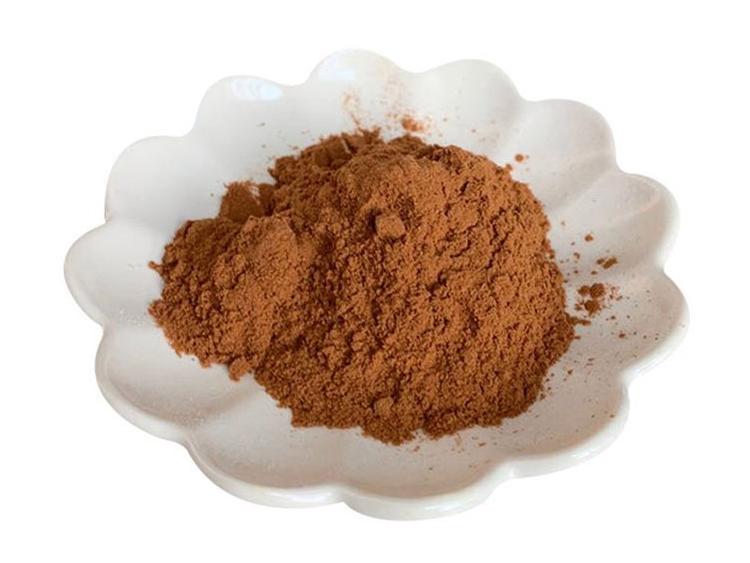Study on Ivy Leaf Extract α-Hederin and Cancer
Ivy extract α-hederin is derived from the traditional Chinese medicine compound Intestinal Cleanser, obtained through high-pressure liquid chromatography-mass spectrometry analysis of Intestinal Cleanser. It is a typical pentacyclic triterpenoid saponin [1–3], containing rhamnose and arabinose in its structure. Pentacyclic triterpenoid saponins are a class of naturally occurring saponins widely used in clinical applications, found in various plants. Extensive research has demonstrated that pentacyclic triterpenoid saponins possess a wide range of biological activities, including antitumor, antiviral, anti-inflammatory, and immunomodulatory effects.
In recent years, with the continuous deepening of research on α-hederin, scholars have discovered that it also possesses a wide range of pharmacological effects. As research into the pharmacological effects of α-hederin has deepened, significant breakthroughs have been made in understanding its molecular mechanisms of antitumor activity. Its antitumor effects primarily manifest as inhibitory effects on both the origin and growth of tumor cells. α-hederin can exert varying degrees of pharmacological effects on the development of various tumor cells, including human colorectal cancer, gastric cancer, hepatocellular carcinoma, breast cancer, and melanoma, through multiple molecular mechanisms. This paper provides a brief review of the recent research progress on the antitumor pharmacological effects of α-hederin and provides a basis for future research and development of its antitumor effects.

1 Antitumor Effects
1.1 Inhibition of Tumor Cell Proliferation
Current studies have found that α-hederin can inhibit the proliferation of human lymphoma cells U937, human breast cancer cells MCF-7, mouse lymphocytic leukemia cells P388, and human liver cancer cells Hep G2 by affecting DNA synthesis capacity and inhibiting the expression of certain growth regulators and their corresponding receptors [4]; α-hederin can effectively inhibit the growth of pancreatic cancer cells and liver cancer cells [5]; Additionally, α-hederin saponins inhibit the growth of human lung adenocarcinoma epithelial cells A549, human laryngeal cancer epithelial cells HEp-2, human colorectal cancer cells HT-29, and pancreatic cancer cells MI-APACA-2, with effects that are time- and dose-dependent [6–7].
Wang Guojuan et al. [8] found that α-hederin, an extract from ivy, acted on colon cancer Lovo cells, causing morphological changes in the cells, suggesting that α-hederin can inhibit the proliferation of colon cancer Lovo cells. When combined with the chemotherapy drug oxaliplatin, the morphological changes in the cells were more pronounced, and the inhibitory effect on colon cancer cell proliferation was also more significant. Additionally, the metabolic product of α-hederin, Kalopanaxsaponin I (KsI), exhibits strong inhibitory effects on various tumor cell lines and in vivo tumors. Experimental evidence shows that as the concentration of α-hederin increases, tumor cell growth is effectively inhibited [9].
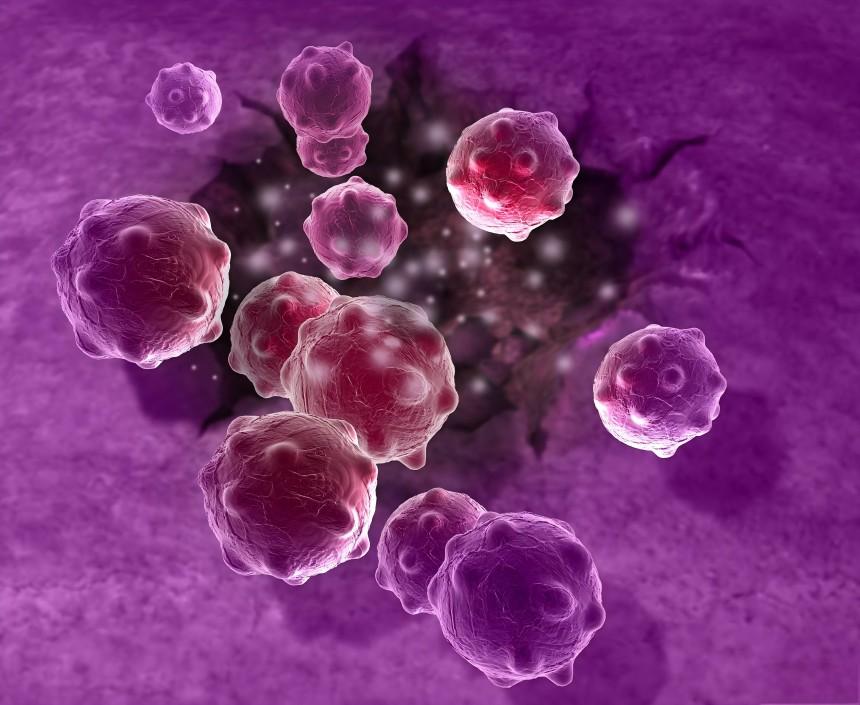
1.2 Induction of tumor cell apoptosis
α-hederin exhibits a significant apoptotic induction effect on human brain glioblastoma cells U251. α-hederin may induce apoptosis by progressively depleting mitochondrial membrane potential in tumor cells, activating the apoptotic gene caspase-3, downregulating the expression of the anti-apoptotic protein Bcl-2 and upregulating the expression of the apoptotic protein Caspase-3, thereby promoting apoptosis in U251 cells. This suggests that α-hederin may induce apoptosis in U251 cells through the mitochondrial pathway by modulating the expression of Bcl-2 and Caspase-3 proteins [10]. Other researchers have investigated the pharmacological effects of α-hederin on inducing apoptosis in melanoma B16 cells, focusing on the influence of the phosphoinositide-3-kinase (PI3K)/Akt/mTOR signaling pathway activation. After α-hederin acts on B16 cells, the levels of pro-apoptotic protein Bax increased, Bcl-2 levels decreased, and the activity of Caspase-3 and Caspase-9 enhanced, thereby promoting apoptosis in B16 cells. Meanwhile, the levels of p-PI3K, p-Akt, and p-mTOR in B16 cells decreased, suggesting that α-hederin has an apoptotic-inducing effect on B16 cells, and this effect may be related to the inhibition of the PI3K/Akt/mTOR signaling pathway [11]. Additionally, α-hederin can induce apoptosis in oral cancer cells SCC-25 by inhibiting the PI3K/Akt/mTOR signaling pathway [12].
Cheng et al. [13] reported that α-hederin exhibits strong inhibitory effects on various breast cancer cells, effectively inhibiting the growth of ER-positive human breast cancer cells MCF-7 and ER-negative breast cancer cells MDA-MB-231 while inducing their apoptosis. α-hederin can reduce mitochondrial membrane potential, thereby reducing the expression of apoptotic protease activating factor-1 (Apaf-1) and cytochrome C (Cyt-C) in breast cancer cells, and increasing the activity of caspase-3 and caspase-9 in breast cancer cells, suggesting that α-vinca alkaloids induce apoptosis in MCF-7 and MDA-MB-231 cells through a mitochondrial-mediated signaling pathway. Additionally, researchers have proposed that α-vinca alkaloids may induce apoptosis in esophageal cancer Ecal109 cells through the reactive oxygen species (ROS)-mitochondrial pathway, Bismuth sulfonamide (BSO) is a commonly used inhibitor of reduced glutathione (GSH) synthesis, while N-acetylcysteine (NAC) is a commonly used promoter of GSH synthesis. Studies have observed that pretreatment with BSO enhances the apoptotic induction of α-hederin on Ecal109 cells, while pretreatment with NAC yields the opposite result, confirming that α-hederin saponins induce Ecal109 cell apoptosis through the accumulation of intracellular reactive oxygen species (ROS).
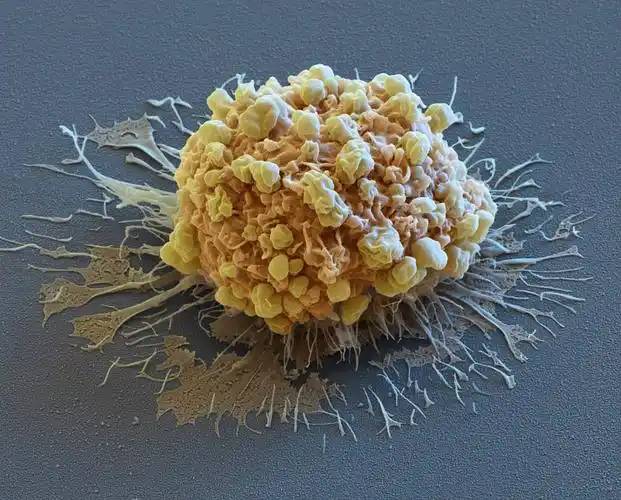
After α-hederin extract was applied to Ecal109 cells, the expression of mitochondrial-related proteins AIF and CytC increased. Following intervention with BSO and NAC, the protein expression of AIF was promoted, while that of CytC was inhibited, suggesting that α-hederin-induced apoptosis in Ecal109 cells may be related to the accumulation of reactive oxygen species (ROS) in tumor cells, which in turn induces the release of mitochondrial-related factors AIF and CytC [14]. α-hederin saponins reduce the survival rate of hepatocellular carcinoma HCC cells and induce HCC cell apoptosis by depleting glutathione (GSH) and reducing reactive oxygen species (ROS) accumulation [15]. ROS) accumulation, thereby reducing the survival rate of HCC cells and inducing HCC cell apoptosis [15]. Lorent et al. [16] further reported that high concentrations of α-hederin may induce cell apoptosis, potentially related to membrane cholesterol. High concentrations of α-hederin increase the permeability activity of tumor cell membranes, leading to Ca²⁺ influx from extracellular media, and the increased activity of cholesterol-dependent pores causes cholesterol-saponin aggregation in the membrane, further inhibiting the formation of tumor cell pseudopodia, thereby inducing tumor cell apoptosis. Studies have also found that increased membrane permeability activity in tumor cells, leading to increased cytoplasmic Ca²⁺ levels, may trigger caspase-dependent nuclear fragmentation, which is another cause of apoptosis.
1.3 Hemolytic activity
Some studies have shown that α-hederin may possess strong hemolytic activity, exhibiting cytotoxicity against various cancer cell lines and tumors in vivo. α-hederin strongly interacts with lipid monolayers, demonstrating membrane-disrupting activity against tumor cells [17], and proposed that the mechanism by which α-hederin induces tumor cell destruction may involve apoptosis or membrane alterations, potentially through the α-L-rhap (1→2)-α-L-araposidic sequence affecting the cytotoxicity of glycyrrhizin and changes in the sugar moiety, thereby influencing tumor cell toxicity activity [18].
The 28th carboxyl group is a relatively important functional group for the antitumor activity of α-hederin and is also the source of its hemolytic activity. Therefore, to reduce the side effects of α-hederin and enhance its antitumor activity, Lei Mingdao et al. [19] proposed using diols of different chain lengths as linkers to connect the 28th carboxyl group of α-hederin with furoquinolone oxides via ester bonds (which are easily cleaved in vivo), thereby releasing high concentrations of nitric oxide (NO) to enhance the antitumor activity of α-hederin.
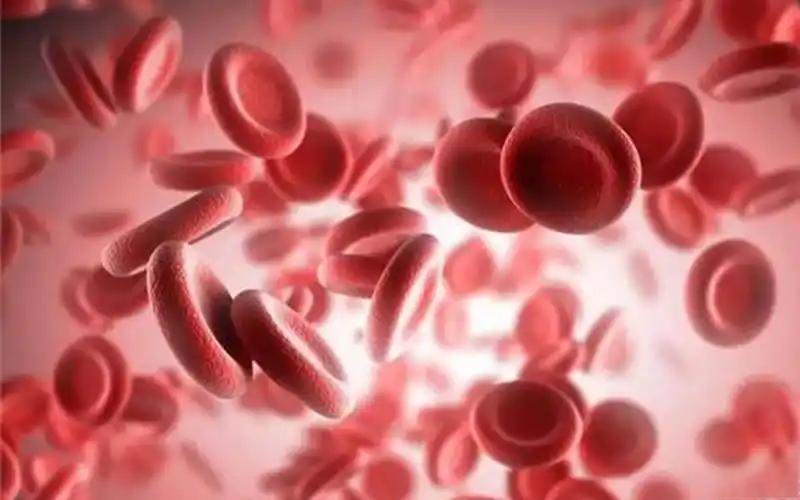
1.4 Enhancing Chemotherapy Drug Sensitivity and Inducing Autophagy
5-fluorouracil (5-FU) is a commonly used medical drug with good therapeutic effects on gastrointestinal tumors and other tumors, playing a crucial role in clinical treatment. Bun et al. [20] suggested that α-hederin and 5-FU act on colon cancer cells HT-29, and when used in combination at their IC50 ratio, exhibited synergistic effects within the moderate cytotoxic range (25% cell growth inhibition) or at high growth inhibition levels, suggesting that the combination of α-hederon and 5-FU can optimize sensitivity in colon cancer cells.
A study found [21] that the chemotherapy drug paclitaxel (Tax) induces protective autophagy in non-small cell lung cancer (NSCLC) cells, leading to the development of drug resistance. α-hederin can inhibit the maturation of lysosomal cathepsin D by altering lysosomal pH and blocking late autophagy flux in NSCLC cells, thereby enhancing Tax's cytotoxic effect on NSCLC cells. Additionally, the combination of α-hederin and Tax increases ROS accumulation in NSCLC cells, while the ROS inhibitor NAC reverses the inhibitory effect of the combination therapy, suggesting that α-hederin can enhance Tax's cytotoxic effect on NSCLC cells by promoting ROS accumulation and that the combination of α-hederin and Tax may serve as a new therapeutic strategy for NSCLC.
α-hederin can induce autophagy in colon cancer cells. α-hederin activates the AMP-activated protein kinase/mTOR (AMPK/mTOR) signaling pathway, which can be blocked by the ROS inhibitor NAC. Additionally, NAC can inhibit α-hederin-induced apoptosis and autophagy. This suggests that α-hederin activates apoptosis through ROS-activated mitochondrial signaling pathways and induces autophagy-mediated cell death in colorectal cancer cells via ROS-dependent AMPK/mTOR signaling pathways [22].
1.5 Nanotherapy
Due to the lipophilic nature of α-hederin, it has low bioavailability and poor oral absorption. Studies have explored enhancing its bioactivity by encapsulating it in chitosan (CS) nanoparticles. Zhu et al. [23] successfully developed a monoclonal antibody CS NP loaded with antitumor drugs. CD147-modified NPs achieved targeted delivery to liver cancer cells through antibody-antigen specific binding reactions. Antibody-modified hollow CS-NPs exhibit no cytotoxicity toward tumor cells and demonstrate good biocompatibility. α-hederin-CS-CD147-NPs are captured into cells via clathrin-mediated endocytosis, significantly affecting the stability and activity of tumor cells. This suggests that antibody-modified CS-NPs loaded with the antitumor drug α-vinca alkaloids can further enhance antitumor activity through antibody-antigen specificity recognition.
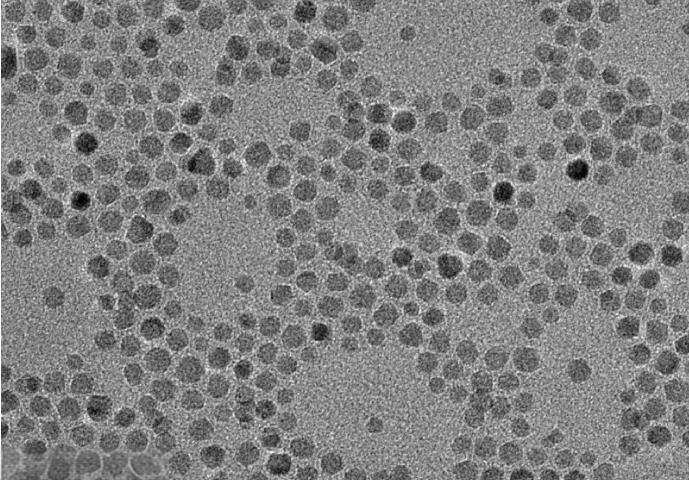
α-hederin has unique cell membrane interactions, interacting with membrane cholesterol and aggregating to form transient pores in the cell membrane. Nicol et al. [24] utilized the permeability and amphiphilicity of α-hederin, induced-emission nanoparticles (AIE-NPs) and pure organic room-temperature phosphorescent nanocrystals (NCS) to aggregate, finding that the nanoparticles were more suitable for delivering various AIE-NPs and NCS into tumor cells, thereby enhancing the antitumor bioactivity of α-hederin. Other researchers have developed targeted delivery of α-hederin using micelles based on a diblock copolymer. This amphiphilic diblock copolymer is poly(ε-caprolactone)-b-poly(oligomethyl methacrylate-co-RGD) (PCL-b-P(OEGMA-co-RGD)), composed of hydrophobic PCL, hydrophilic POEGMA, and the targeting peptide (RGD), and synthesized through ring-opening polymerization (ROP), atomic transfer radical polymerization (ATRP), and post-functionalization of the polymer. PCL-b-P(OEGMA-co-RGD) and α-hederin form co-micelles to obtain targeted micelle nanoparticles containing α-hederin saponins, α-hederin-NP-RGD, suggesting that α-hederin-NP-RGD exhibits superior antitumor effects, including inhibiting tumor cell proliferation and inducing tumor cell apoptosis [25].
2 Summary and Outlook
Ivy extract α-hederin can bind to various ion channels and receptors on tumor cell membranes, exerting its antitumor pharmacological activity, such as inhibiting tumor cell proliferation, inducing tumor cell apoptosis, strong hemolytic activity, enhancing chemotherapy drug sensitivity, inducing autophagy, and inhibiting tumor cell metastasis. Additionally, α-hederin has been found to enhance antitumor bioactivity by binding to nanoparticles, attracting increasing attention from researchers in tumor treatment and prevention. Its clinical application prospects are broad, and it holds promise as a novel drug for the prevention and treatment of various tumors.
Reference
[1]Yu M,Liu J,Li L,et al.Pharmacokinetic parameters of three active ingredients hederacoside C,hederacoside D,and α - hederin in Hedera helix in rats[J].J Sep Sci,2016,39 ( 17) : 3292-3301.
[2]Saadat S,Mohammadi M,Fallahi M,et al.The protective effect of α-hederin,the active constituent of Nigella sati- va,on tracheal responsiveness and lung inflammation in ovalbumin -sensitized guinea pigs[J].J Physiol Sci,2015, 65 (3) : 285-292.
[3]Prescott TA,Rigby LP,Veitch NC,et al.The haploinsuffi- ciency profile of α-hederin suggests a caspofungin -like antifungal mode of action[J].Phytochemistry,2014,101 :116 -120.
[4]Swamy SMK,Huat BTK.Intracellular glutathione depletion and reactive oxygen species generation are important in α - hederin -induced apoptosis of P388 cells[J].Mol Cell Bio- chem,2003,245 ( 1 /2) : 127 -139.
[5] Liu Qiang. Study on the Antitumor Activity of a New Active Compound, Pulsatilla Soapberry A (BD), Extracted from the Traditional Chinese Medicine Pulsatilla [D]. Suzhou: Soochow University, 2012.
[6]Rooney S,Ryan MF.Effects of alpha -hederin and thymo- quinone,constituents of Nigella sativa,on human cancer cell lines[J].Anticancer Res,2005,25 (3) : 2199-2204.
[7]Rooney S,Ryan MF.Modes of action of alpha-hederin and thymoquinone,active constituents of Nigella sativa,against HEp-2 cancer cells[J].Anticancer Res,2005,25 ( 6 ) : 4255-4259.
[8] Wang Guojuan, Yu Wenyuan, Guo Hongfei, et al. Study on the anti-proliferative effects of α-ivy saponins against colorectal cancer [J]. Journal of Pharmacology and Clinical Medicine of Traditional Chinese Medicine, 2017, 33 (4): 43–47.
[9] Eid AM, Elmarzugi NA, Abu ALM, et al. A review on the cosmeceutical and external applications of Nigella sativa [J]. Journal of Tropical Medicine, 2017, 2017: 7092514.
[10] Zhang Tie, Peng Cuiping, Wang Yonglin, et al. Mechanistic study on the antitumor effects of α-vinca alkaloids [J]. Chinese Journal of New Drugs and Clinical Pharmacology, 2015, 26 (2): 175–179.
[11] Zhang Buxin, Zhao Xianmin, Cheng Qiong, et al. Effects of α-ivy saponins on proliferation and apoptosis of melanoma B16 cells and their mechanisms [J]. Chinese Journal of Experimental Traditional Medicine, 2018, 24(12): 81–85.
[12]Wang HY,Wu B,Wang HT,et al.Alpha-hederin induces the apoptosis of oral cancer SCC -25 cells by regulating PI3K / Akt / mTOR signaling pathway[J].Electron J Bio- techn,2019,38 :27-31.
[13]Cheng L,Xia TS,Wang YF,et al.The anticancer effect and mechanism of α-hederin on breast cancer cells[J].Int J Oncol,2014,45 (2) :757-763.
[14] Li Jiao, Ma Jingjing, Hu Xue, et al. α-Ivy saponin promotes apoptosis of esophageal cancer cells through the reactive oxygen species-mitochondrial pathway [J]. Journal of Difficult and Complex Diseases, 2018, 17(9): 932–935.
[15]Li J,Wu DD,Zhang JX,et al.Mitochondrial pathway medi- ated by reactive oxygen species involvement in α-hederin- induced apoptosis in hepatocellular carcinoma cells[J]. World J Gastroenterol,2018,24( 17) : 1901 -1910.
[16]Lorent JH,Léonard C,Abouzi M,et al.α - Hederin in- duces apoptosis,membrane permeabilization and morpho- logic changes in two cancer cell lines through a cholesterol- dependent mechanism[J].Planta Med,2016,82 ( 18) : 1532 -1539.
[17]Wojciechowski K,Orczyk M,Gutberlet T,et al.Complex- ation of phospholipids and cholesterol by triterpenic sapothymoquinone,active constituents of Nigella sativa,against HEp-2 cancer cells[J].Anticancer Res,2005,25 ( 6 ) : 4255-4259.
[18]Chwalek M,Lalun N,Bobichon H,et al.Structure-activity relationships of some hederagenin diglycosides : Haemoly- sis,cytotoxicity and apoptosis induction[J].Biochim Bio- phys Acta,2006,1760(9) : 1418 -1427.
[19] Lei Mingdao, Zheng Lili, Zhang Ling, et al. Synthesis and antitumor activity of α-ivy saponin nitric oxide donor derivatives [J]. Modern Drugs and Clinical, 2019, 34(1): 1–4.
[20]Bun SS,Elias R , Baghdikian B,et al.Alpha -hederin po- tentiates 5 -FU antitumor activity in human colon adeno- carcinoma cells[J].Phytother Res,2008,22( 10) : 1299 - 1302.
[21]Zhan Y,Wang K,Li Q,et al.The novel autophagy inhibitor alpha -hederin promoted paclitaxel cytotoxicity by increasing reactive oxygen species accumulation in non- small cell lung cancer cells[J].Int J Mol Sci,2018,19 ( 10 ) : 3221.
[22]Sun J,Feng Y,Wang Y,et al.α-hederin induces autoph- agic cell death in colorectal cancer cellsthrough reactive oxygen species dependent AMPK / mTOR signaling pathway activation[J].Int J Oncol,2019,54(5) : 1601 -1612.
[23]Zhu R , Zhang CG,Liu Y,et al.CD147 monoclonal antibod- y mediated by chitosan nanoparticles loaded with α - hed- erin enhances antineoplastic activity and cellular uptake in liver cancer cells[J].Sci Rep,2015,5 : 17904.
[24]Nicol A,Kwok RTK,Chen C,et al.Ultrafast delivery of aggregation -induced emission nanoparticles and pure organic phosphorescent nanocrystals by saponin encapsulation[J].J Am Chem Soc,2017,139(41) : 14792 -14799.
[25]Sun J,Liu T,Xu J.Improving the anticancer activity of α -hederin by physically encapsulating it with targeted mi- celles assembled from amphiphilic block copolymers[J].J Drug Deliv Sci Technol,2016,35 :252-259.


 English
English French
French Spanish
Spanish Russian
Russian Korean
Korean Japanese
Japanese